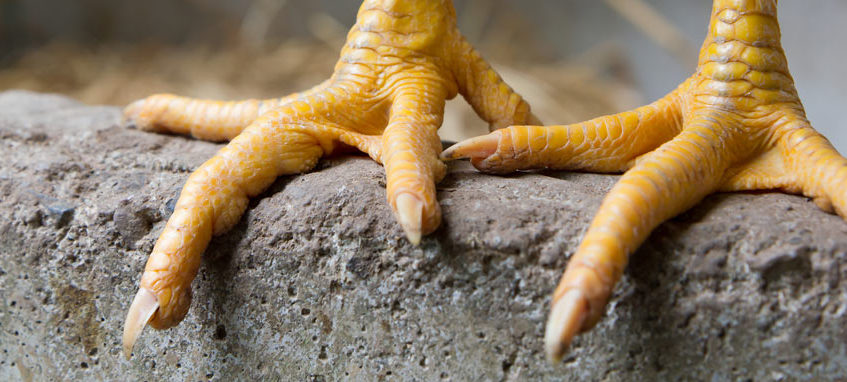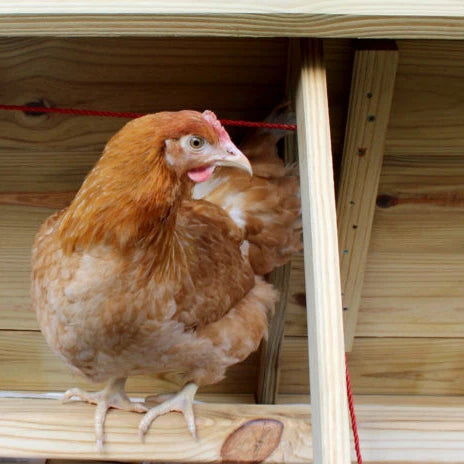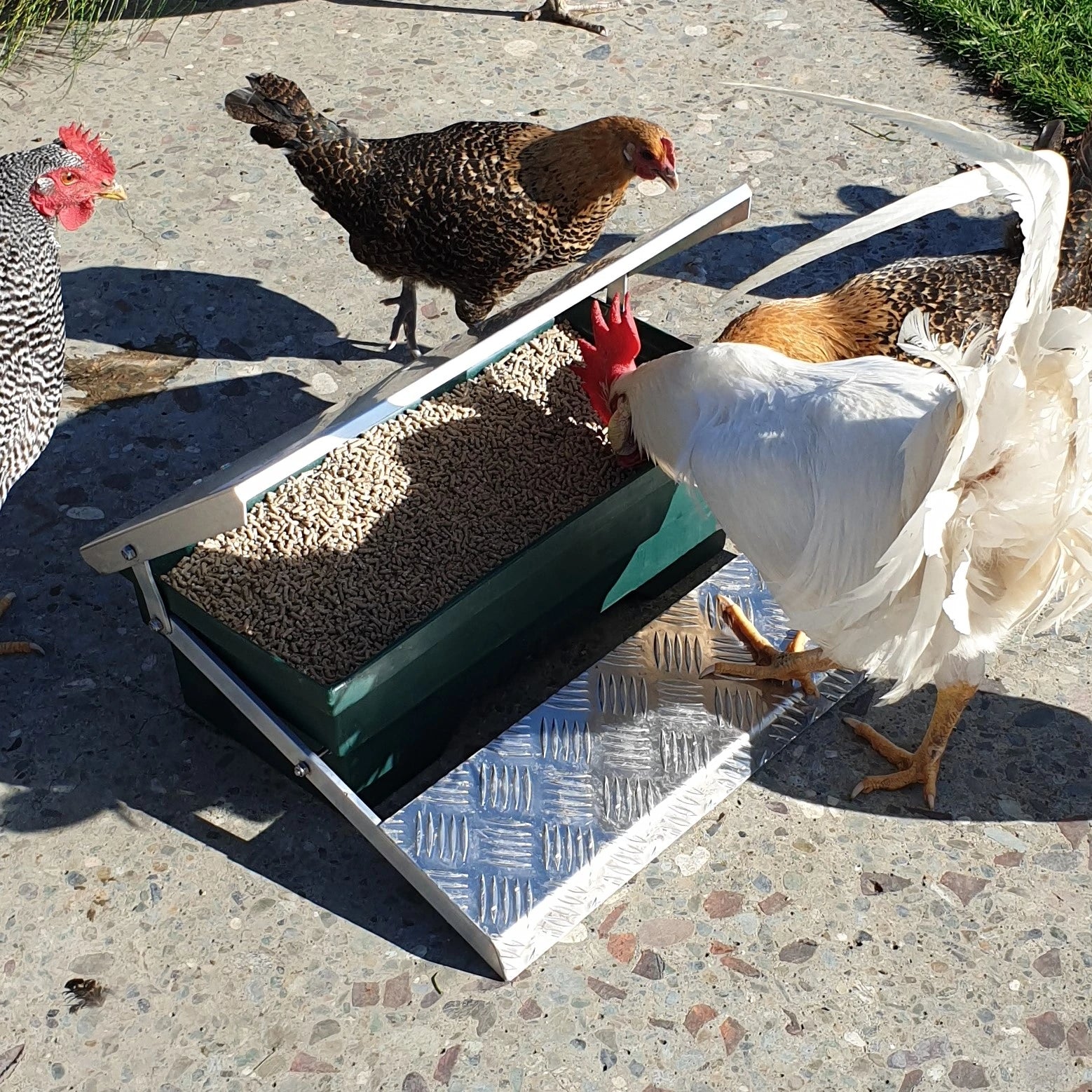What are Scaly Leg Mites?
Sunday, 1st November, 2020

Healthy chickens have scales that are smooth and flat. 😊
How Do I Know If My Chickens Have Scaly Leg Mites?
Chickens with scaly leg mites will not have scales which are smooth and flat. They will be crusty, and the scales uneven and raised. The skin and legs will become thickened and have a rough lumpy appearance, often showing what would appear to be a white growth on the leg/s.This is due to the mite causing a multiplication of the tissue cells and the secretion of a serum. The infection is easily recognised due to its physical appearance however the mites are hard to see with the naked eye, they look like tiny white spherical creatures (approximately 0.25-0.5mm in diameter in the early stages). Scaly leg mites burrow into the skin on the birds’ legs and top of their feet, where they will spend their entire life cycle (10-14 days) digging tunnels, eating their skin, laying eggs, and leaving droppings behind. Eventually, the heavy crusting of the scales can start to interfere with joint flexion, resulting in irritation, lameness, deformity, and necrosis. In addition, chickens infested with scaly leg mites are at risk of developing secondary bacterial infections, loss of toes and fungal pyoderma.


How Do Chickens Get Infected with Scaly Leg Mites?
Scaly Leg is an infestation caused by a small external parasitic mite known as Cnemidocoptes Mutans. This tiny mite lives in the ground or sometimes the floor of the chicken coop usually in damp conditions. It then burrows under the scales of the bird's legs or feet, where it causes great discomfort. It may also infest other areas such as the comb or wattles of chickens. Scaly leg mites are spread between birds by direct contact with infected flock members. They are initially introduced into the flock through wild birds, rodents, or by already being present within the soil and surrounding environment.
However, the most common way to introduce it to your flock is to take on additional birds from someone else’s backyard and introduce these individuals directly into your flock. It is best practice to quarantine and drench new flock additions. This goes a long way to ensuring scaly leg is not introduced to your flock together with any other internal and external parasites that could be hiding on your new members.
Scaly Leg Mite is highly contagious and affects birds of all ages, although older birds and feathered leg breeds tend to be more susceptible. In the early stages it would appear to cause very little problem and is often not visually sighted, but should it be neglected the birds lose condition, go lame and have difficulty in perching. If left untreated then further infections can occur, and the bird could die. Any treatment of a bad infestation will not be quick, it will require a number of weeks of constant treatment until finally the encrustations fall off and the scales return to normal. It can take up to a year before legs look normal again. It doesn't only affect poultry, any scaly-legged bird is susceptible e.g. small garden birds, and these birds can often carry the mite into your chicken run.
How Do I Treat My Chickens for Scaly Leg Mites?
The best treatment is a three-pronged approach to ensure all bases are covered. Suffocate, Drench and Disinfect.
In order to initially suffocate the mites and help promote growth of new scales we recommend using a scaly leg spray treatment It comes in a hand held spray bottle and is easy to apply. This organic spray is applied to the legs and feet of each infected bird. Its natural oils remain on the scales to help prevent further infestation and suffocate the mites. We recommend treating all birds in the flock. Repeated twice weekly for a few weeks until the old, damaged scales have fallen off, and new healthy scales have grown in.
Scaly Leg Spray
Prevention - 7 Easy Things To Do!
- Quarantine and treat any new additions to flock
- Provide flock with a dust bathing area
- Maintain a clean environment
- Keep rodents out of coops
- Prevent contact with wild birds
- Thoroughly clean and disinfect any tree branches brought in to be used as perches for birds.







